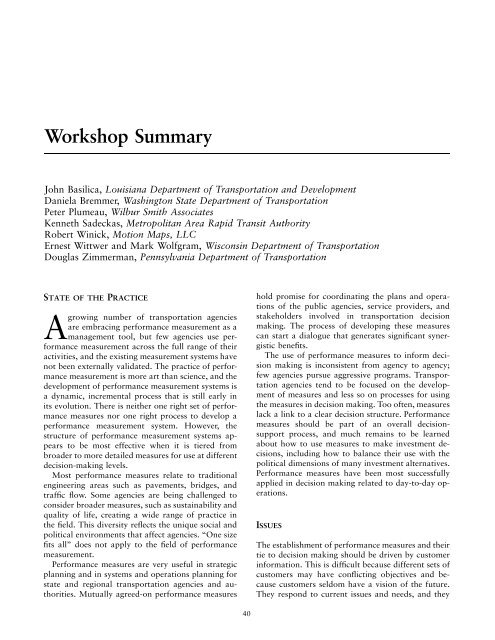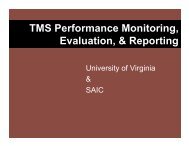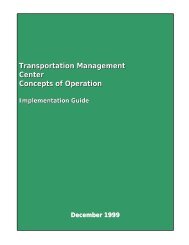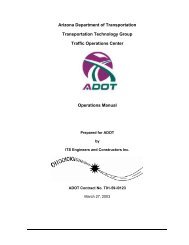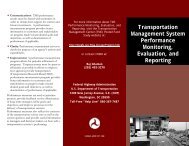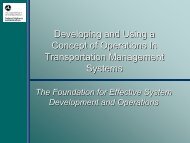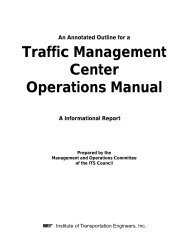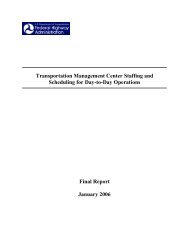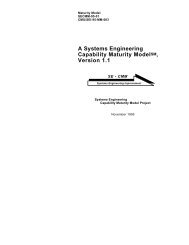Conference Proceedings 26 - Transportation Research Board
Conference Proceedings 26 - Transportation Research Board
Conference Proceedings 26 - Transportation Research Board
- No tags were found...
Create successful ePaper yourself
Turn your PDF publications into a flip-book with our unique Google optimized e-Paper software.
Workshop SummaryJohn Basilica, Louisiana Department of <strong>Transportation</strong> and DevelopmentDaniela Bremmer, Washington State Department of <strong>Transportation</strong>Peter Plumeau, Wilbur Smith AssociatesKenneth Sadeckas, Metropolitan Area Rapid Transit AuthorityRobert Winick, Motion Maps, LLCErnest Wittwer and Mark Wolfgram, Wisconsin Department of <strong>Transportation</strong>Douglas Zimmerman, Pennsylvania Department of <strong>Transportation</strong>STATE OF THE PRACTICEAgrowing number of transportation agenciesare embracing performance measurement as amanagement tool, but few agencies use performancemeasurement across the full range of theiractivities, and the existing measurement systems havenot been externally validated. The practice of performancemeasurement is more art than science, and thedevelopment of performance measurement systems isa dynamic, incremental process that is still early inits evolution. There is neither one right set of performancemeasures nor one right process to develop aperformance measurement system. However, thestructure of performance measurement systems appearsto be most effective when it is tiered frombroader to more detailed measures for use at differentdecision-making levels.Most performance measures relate to traditionalengineering areas such as pavements, bridges, andtraffic flow. Some agencies are being challenged toconsider broader measures, such as sustainability andquality of life, creating a wide range of practice inthe field. This diversity reflects the unique social andpolitical environments that affect agencies. ‘‘One sizefits all’’ does not apply to the field of performancemeasurement.Performance measures are very useful in strategicplanning and in systems and operations planning forstate and regional transportation agencies and authorities.Mutually agreed-on performance measureshold promise for coordinating the plans and operationsof the public agencies, service providers, andstakeholders involved in transportation decisionmaking. The process of developing these measurescan start a dialogue that generates significant synergisticbenefits.The use of performance measures to inform decisionmaking is inconsistent from agency to agency;few agencies pursue aggressive programs. <strong>Transportation</strong>agencies tend to be focused on the developmentof measures and less so on processes for usingthe measures in decision making. Too often, measureslack a link to a clear decision structure. Performancemeasures should be part of an overall decisionsupportprocess, and much remains to be learnedabout how to use measures to make investment decisions,including how to balance their use with thepolitical dimensions of many investment alternatives.Performance measures have been most successfullyapplied in decision making related to day-to-day operations.ISSUESThe establishment of performance measures and theirtie to decision making should be driven by customerinformation. This is difficult because different sets ofcustomers may have conflicting objectives and becausecustomers seldom have a vision of the future.They respond to current issues and needs, and they40


